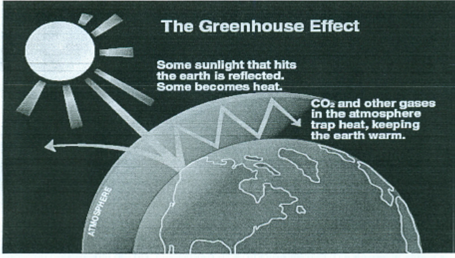Disaster Risk Management (DRM)
Climate Change and Disaster Risk Management
The topic analyses climate change and Disaster Risk Management concepts. The module looks into details on climate change and how it triggers some disasters associated with the change in climate. The last part of the module looks at the Disaster Risk Management and the DRM Cycle. There is a description of disaster cycle phases and other related information.
Steps1 :Define the relevant concepts such as
- Weather, Climate, Climate variability and change, Climate change mitigation and adaptation, Green house (blanket) effect,, Global warming , Climate hazard, Climate risk, Climate Vulnerability, Climate related disasters
Step 2: Perform Card Game, Form 2 groups, one with question of concepts and the other with answers. Participants will be organised in groups of two where both will have cards and cards for one group will have questions where as cards for the other group will bear answers. The groups will be matching the cards with the correct answers and it will be from there when the facilitator will judge the level of knowledge for the participants.
Step 3: Explain how greenhouse gasses cause global warming and how this leads to climate change related risks and disasters through green house (blanket) effect

(Need illustration here)
Step 4: Explain the DRM Cycle
Step 5: Divide participants into groups and ask them to discuss the linkages between disaster risk management and climate change
Step 6: Plenary –ask each group to present their points and allow plenary discussions
Step 7: Conclusion: Summarise the linkages between climate change and disaster risk management
Effects of climate change
Impacts of climate change in different sectors in Malawi
Malawi developed its National Adaptation Programmes of Action (NAPA) by evaluating the impacts of adverse climatic conditions in eight important sectors of economic growth, and ranked the identified activities using multi-criteria analysis to arrive at a list of fifteen urgent and immediate priority needs for adaptation. The sectors that were analysed are agriculture, water, human health, energy, fisheries, wildlife, forestry and gender. What follows is a brief overview of the findings from the eight sectors.
Groups within the community that are particularly vulnerable to climate change socially and economically.
There are several groups within the community that are particularly vulnerable to climate change economically and socially.
- People with special needs. These people are particularly vulnerable in the community due to nature of their welfare. These people are
- The elderly
- PLWHIV/the chronically ill
- The orphans
- Female headed households
- People with disabilities
- Fishermen. These people depend on rivers for their survival and if such rivers get flooded, it may not be possible for them to go and fish thereby affecting their way of living.
- Farmers. Some people also depend on farming as the only way of feeding their families and if there’s a drought or low rainfall, their lives are also affected since farming is their only source of income.
Women. Socially, families are also affected because women spend much of their time fetching fire wood instead of attending to their families
Linking Climate change to Disaster Risk Management
Climate Change induces Disasters
Effects of climate change are very severe considering that the effects affect almost 85% of the population who depend on farming as their main source of livelihood. Some of these effects are;
- Floods; this is a temporary covering of land by water, usually as a result of heavy rainfall. Some of the reasons that cause floods are; excessive rainfall, blockage of drainage systems, cultivating along steep slopes and deforestation due to rapid population growth.
- Droughts; this is a short time reduction in water or moisture that is below the normal or expected amount for a specified period. Droughts are often caused by deforestation which reduces the rate of transpiration which affects the water cycles leading to little or no rain.
- The changing of rainfall patterns; This is a situation whereby the normal trend of rainfall is non-uniform and this makes some areas overheated which result in low rainfall and heavy rains in other areas respectively.
- Cyclones; A cyclone is a type of strong wind that usually cause damage by blowing infrastructure like schools, markets and dwelling houses thereby putting people’s lives at risk.
Explain how green house gasses cause global warming and how this leads to climate change related risks and disasters through green house (blanket) effect

Types of Disasters in Malawi
There are two types of Disasters, the natural and Man-made
Natural Disasters
These are Disasters that are caused naturally by nature. Examples are
- Earthquakes, Earth Tremors, Natural Storms, Hurricanes, Pest infestation, Bush/Wild Fires, Storms, Tsunami
Human-induced Disasters
These are type of disasters that happens due to human bad activities that impact on environment. This usually happens due to environment mismanagement as a result of growing population and the following are examples
- Floods, Fires, Dry spells, Drought, Diseases
In Malawi there about 15 districts that are prone to disasters and these are; Karonga, Rumphi, Nkhatabay, Salima, Nkhotakota, Dedza, Ntcheu, Mangochi, Machinga, Balaka, Zomba, Blantyre, Phalombe, Chikhwawa and Nsanje
